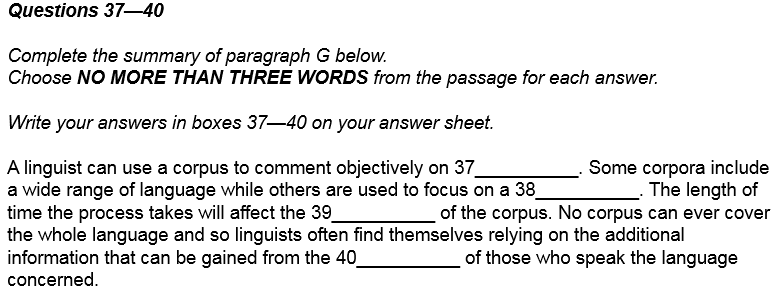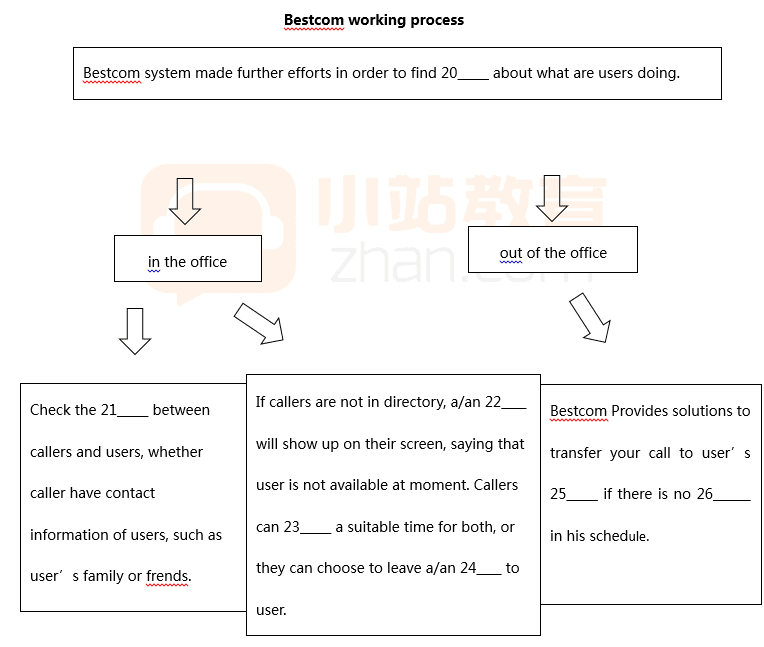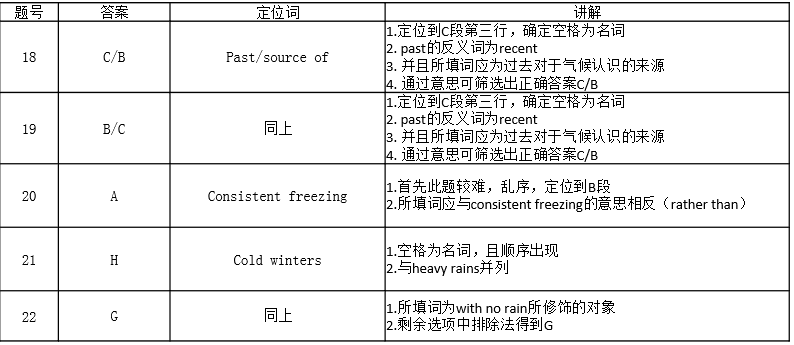gre考试阅读文章如何快速读懂?今天小编给大家带来了gre考试阅读文章如何快速读懂,希望能够帮助到大家,下面小编就和大家分享,来欣赏一下吧。
gre考试阅读文章如何快速读懂
gre阅读考试如何提分?
1.一句话只看一遍,充分利用自己的gre考试语法知识,时刻把握句子主干,修饰成分要毫无感觉得快速浏览(这里的“毫无感觉”不是略读,而是不希望过多的修饰成分或插入成分影响对句子主干的理解,这四个字需要自己体会)。
2.做标记除了大写字母、时间年代、最高级、转折标志词、因果标志词、列举、让步、强对比以外,还要标记出并列连接词(如and)、分号、冒号、表示作者态度的词(这个比较难,需要自己体会收集),原因我会在下面的取舍中谈到。我的做标记的小窍门:标记符号不要只用一种(如下划线),也不要过多,个人感觉最多三种(如括号、圆圈、下划线),分别标记原因、转折和其他,不过我自己只用下划线和括号。
3.一定要取舍。我以前的标准是:
a)让步分句(如:带although的分句、带it is true的分句、带do的分句等)一律跳过(但是用括号括起来),只看后半个分句;
b)such as后的内容一律跳过,也用括号括起来,不过我会数数列举的个数,如果是4个,则必出题,其他个数不用管,出题了再回头看;
c)for example举例只要提炼关键词的首字母就可以了,也要括起来,重点看后面或前面的结论。
d)原因——标志词常为BECause、since——一律跳过,括起来,只看结果。比较容易被忽略的是result in和result from,遇到这两个,我在下面划横线做标记。
e)老观点只把握gre阅读文章关键词、知道讲的是什么就行,其他一律跳过。
f)冒号后一律跳过,冒号下做标记。
g)分号后一律跳过,因为表示并列,内容和前面大体一致,分号做标记,出题的话再回来看。
现在的标准是:上面这些全看,因为速度上来了,但看这些内容时仍然是“毫无感觉”地看,可以不用担心它们会分散注意力了。
当这些内容都做标记后,文章结构就非常清楚了,哪儿是举例、哪儿是结论、哪儿是原因、哪儿是转折一目了然,定位非常容易。
4. (本来想把这条放在第一位的)我的提高阅读速度的不二法门:反复阅读已经读过的文章,5遍左右吧!慢慢地就会产生一种直觉,知道哪里略读哪里重读。
GRE阅读练习题:地球冷暖周期通过石头含铁量推定
Recent studies of sediment in the North Atlantic’s deepwaters reveal possible cyclical patterns in the history of Earth’s climate. Therock fragments in these sediments are too large to have been transported thereby ocean currents; they must have reached their present locations by travelingin large icebergs that floated long distances from their point of origin beforemelting.
Geol.ist Gerard Bond noticed that some of the sedimentgrains were stained with ironoxide, evidence that they originated in localeswhere glaciers had overrun outcrops of red sandstone. Bond’s detailed analysisof deep-water sediment cores showed changes in the mix of sediment sources overtime: the proportion of these red-stained grains fluctuated back and forth fromlows of 5 percent to highs of about 17 percent, and these fluctuations occurredin a nearly regular 1,500-year cycle.
Bond hypothesized that the alternating cycles might beevidence of changes in ocean-water circ
ulation and therefore in Earth’sclimate. He knew that the sources of the red-stained grains were generallycloser to the North Pole than were the places yielding a high proportion of“clean” grains. At certain times, apparently, more icebergs from the ArcticOcean in the far north were traveling south well into the North Atlantic beforemelting and shedding their sediment. Ocean waters are constantly moving, andwater temperature is both a cause and an effect of this movement. As watercools, it becomes denser and sinks to the ocean’s bottom. During some periods,the bottom layer of the world’s oceans comes from cold, dense water sinking inthe far North Atlantic. This causes the warm surface waters of the Gulf Streamto be pulled northward. Bond realized that during such periods, the influx ofthese warm surface waters into northern regions could cause a large proportionof the icebergs that bear red grains to melt before traveling very far into theNorth Atlantic. But sometimes the ocean’s dynamic changes, and waters from theGulf Stream do not travel northward in this way. During these periods, surfacewaters in the North Atlantic would generally be colder, permitting icebergsbearing red-stained grains to travel farther south in the North Atlantic beforemelting and depositing their sediment.
The onset of the so-called Little Ice Age (1300-1860),which followed the Medieval Warm Period of the eighth through tenth centuries,may represent the most recent time that the ocean’sdynamic changed in this way. If ongoing climate-history studies support Bond’shypothesis of 1,500-year cycles, scientists may establish a major natural rhythmin Earth’s temperatures that could then be extrapolated into the future.Because the midpoint of the Medieval Warm Period was about A.D. 850, anextension of Bond’s cycles would place the midpoint of the next warm intervalin the twenty-fourth century.
21.1. According to the passage, which of the following istrue of the rock fragments contained in the sediments studied by Bond?
A. The majority of them are composed of red sandstone.
B. They must have reached their present location over 1,500 years ago.
C. They were carried byicebergs to their present location.
D. Most of them were carried to their present location during a warm period inEarth’s climatic history.
E. They are unlikely to have been carried to their present location during theLittle Ice Age.
21.2. In the final paragraph of the passage (lines 27-33),the author is concerned primarily with
A. answering a question about Earth’s climatic history
B. pointing out a potential flaw in Bond’s hypothesis
C. suggesting a new focus for the study of ocean sediments
D. tracing the general history of Earth’s climate
E. discussing possibleimplications of Bond’s hypothesis
21.3. According to the passage, Bond hypothesized that whichof the following circumstances would allow red-stained sediment grains to reachmore southerly latitudes?
A. Warm waters being pulled northward from the GulfStream
B. Climatic conditions causing icebergs to melt relatively quickly
C. Icebergs containing a higher proportion of iron oxide than usual
D. The formation of more icebergs than usual in the far north
E. The presence of coldsurface waters in the North Atlantic
21.4. It can be inferred from the passage that in sedimentcores from the North Atlantic’s deep waters, the portions that correspond tothe Little Ice Age
A.. differ very little in composition from theportions that correspond to the Medieval Warm Period
B. fluctuate significantly in composition between the portions corresponding tothe 1300s and the portions corresponding to the 1700s
C. would be likely tocontain a proportion of red-stained grains closer to 17 percent than to 5percent
D. show a much higher proportion of red-stained grains in cores extracted fromthe far north of the North Atlantic than in cores extracted from further south
E. were formed in part as
答案:CEEC
GRE阅读结构解析
1.一句话只看一遍,充分利用自己的语法知识,时刻把握句子主干,修饰成分要毫无感觉得快速浏览(这里的“毫无感觉”不是略读,而是不希望过多的修饰成分或插入成分影响对句子主干的理解,这四个字需要自己体会)。
2.做标记除了大写字母、时间年代、最高级、转折标志词、因果标志词、列举、让步、强对比以外,还要标记出并列连接词(如and)、分号、冒号、表示作者态度的词(这个比较难,需要自己体会收集),原因我会在下面的取舍中谈到。我的做标记的小窍门:标记符号不要只用一种(如下划线),也不要过多,个人感觉最多三种(如括号、圆圈、下划线),分别标记原因、转折和其他,不过我自己只用下划线和括号。
3.一定要取舍。我以前的标准是:
a)让步分句(如:带although的分句、带itistrue的分句、带do的分句等)一律跳过(但是用括号括起来),只看后半个分句;
b)suchas后的内容一律跳过,也用括号括起来,不过我会数数列举的个数,如果是4个,则必出题,其他个数不用管,出题了再回头看;
c)forexample举例只要提炼关键词的首字母就可以了,也要括起来,重点看后面或前面的结论。
d)原因——标志词常为BECause、since——一律跳过,括起来,只看结果。比较容易被忽略的是resultin和resultfrom,遇到这两个,我在下面划横线做标记。
e)老观点只把握关键词、知道讲的是什么就行,其他一律跳过。
f)冒号后一律跳过,冒号下做标记。
g)分号后一律跳过,因为表示并列,内容和前面大体一致,分号做标记,出题的话再回来看。
现在的标准是:上面这些全看,因为速度上来了,但看这些内容时仍然是“毫无感觉”地看,可以不用担心它们会分散注意力了。
gre考试阅读文章如何快速读懂相关文章:
★ 手把手教你攻克GRE长阅读
★ GRE高效积累词汇量你需要这些实用方法
★ GRE词汇怎么练才能彻底记牢
★ GRE阅读主题句藏在文章里找不到
★ GRE阅读文章取材的特点是什么
★ GRE考试高频学术性难词大词整理分享
★ GRE数学考场上如何提升答题速度
★ 文章阅读
gre考试阅读文章如何快速读懂
上一篇:gre考试阅读分数提升方法有什么
下一篇:gre考试阅读文章结构解读






